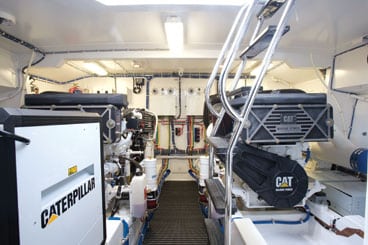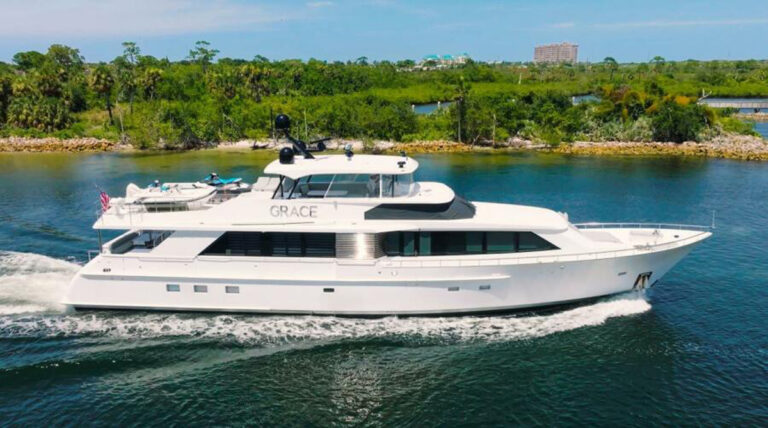
Engine Room
Stories about diesel engine warranties range from boat owners who are quite pleased with their service to others who claim loopholes big enough to drive — or tow — their boats through. The truth is that most engine manufacturers are forthcoming about maintenance they expect. Boat owners are wise to know what to do to ensure coverage.
“Some people say, ‘I’ll run it till it breaks. It’s covered under warranty.’ But maybe it isn’t,” says Peter Frederiksen, communications director for Viking Yachts. “Make sure to read that warranty. Ask questions about it.” Frederiksen points out, for example, that engine computers keep records of all alarms. Continuing to run in an alarm condition may void the warranty. Understand what both the engine manual and warranty say about specific alarms, including whether to head to the closest port for repairs or wait for service until a trip ends.
While electronic engine history might exclude warranty repairs by proving negligence, it can also track the progression of parts failures to include otherwise questionable coverage. In one example, a simple air intake problem caused a turbo to overheat. When the turbo shaft broke, it spewed engine oil and the engine seized. Data proved this happened before alarms — and the skipper — could react. “The boat ended up with a new long block. That would have been a $160,000 repair,” says Charlie Schloemer, president of Palm Beach Power. The boat was near the end of its 60-month extended service policy.
With both standard and extended warranties, timely maintenance and careful records help ensure coverage. “They’re not saying routine maintenance has to be done by an authorized dealer,” Schloemer, an MTU dealer, says. “They want a record of who did what, when, and what parts were put in. Oil and coolant must meet MTU specs, and filters have to come from MTU.”
To stay atop warranty requirements, address all issues promptly and completely. Schloemer warns, for example, that MTU requires a coolant sample when he replaces a leaky circulating pump. If that leak was allowed to continue and the cooling system was topped off with plain water repeatedly over several months, the antifreeze ratio likely won’t meet MTU’s specification. That pump might not be covered, nor might extensive repairs caused if that pump failed and overheated the engine.
A clear service history is particularly important during resale. “Having a warranty adds security to the person buying a boat,” Frederiksen says. “Your boat is going to stand out. You’ll get a return on that [warranty] money” — but not if the buyer perceives any question regarding warranty coverage.
When buying a boat with a warranty, have the engines surveyed by a company-authorized facility. Ask the service manager beforehand for something concrete showing that the service tech specifically looked for, but couldn’t find, anything that might negate warranty coverage. Even with a clean mechanical history, check original contracts. Some European boats might not include warranty coverage in the United States, or vice versa, and warranties may have been initiated before the original owner bought the boat, particularly a boat that had been in a dealer’s inventory or used in boat shows. Past charter service is another red flag for a pleasure-boat warranty.
When details are tended to, extended warranties do pay off. “Caterpillar’s attitude has always been ‘Let’s get this taken care of and make your boss happy,” says Capt. Triston Hunt. The 2005 sport-fisher he runs has had three engine overhauls covered. Hunt does warn, though, that Caterpillar tends to do only the minimum required to get the boat running. He suggests consulting an independent mechanic or surveyor to ensure the best possible repair. He documents any deviations from those suggestions in writing. “Don’t be afraid to call Caterpillar directly,” Hunt says. “Everything reasonable that I’ve asked for I’ve gotten.”
Extended warranty plans vary by manufacturer. Caterpillar’s prices are fixed for each model, regardless of horsepower. In 2012, five-year Platinum Plus extended service coverage for C32 engines ranging from 1,450 to 1,900 horsepower cost about $13,330 for up to 1,500 total engine hours or $22,230 for unlimited hours, per engine. That extends Caterpillar’s initial two-year warranty by three years with no deductible. Five-year Platinum Plus coverage for 930- to 1,150-horsepower Caterpillar C18 engines is $9,090 for 1,500 total hours or $15,150 for unlimited engine hours. Prices for most models fall by nearly 40 percent for four-year total coverage, and they drop more than 50 percent between four- and three-year plans. Cat also offers Platinum plans that cost and cover a bit less.
MTU’s extended protection coverage provides up to three years of additional service, mirroring the standard two-year warranty. Prices vary both by engine horsepower and engine hours. A $500 deductible per engine per service call covers anything a mechanic may turn up, from a simple fuel leak to a major overhaul. That includes all return trips until those service orders are closed.
There is some fine print to understand, though. “Warranty coverage includes travel and labor, but not plane tickets or overnight accommodations,” Schloemer says. Engine manufacturers also typically look to the closest source for repairs. “If you’re my customer in Palm Beach and something happens in the Florida Keys, MTU will still pay me for repairs, but it’ll likely only cover travel from the closest MTU dealer,” Schloemer says.
“No one likes to break down,” says Andrew Boyer, marine sales manager for MTU (now Tognum America), “but if you’re under warranty or have extended coverage, you’ve got peace of mind that the boat will be up and running with minimal cost.” MTU and other diesel manufacturers simply ask that engines are maintained to their specification.
“My maintenance is impeccable and I have records to back it up,” Hunt says. “Maybe that’s why I’ve never had questions about coverage.” The bottom line to ensuring warranty coverage, Hunt says: “Read and follow the manual.”









